
If you have a maple tree, you may have noticed weird growths on the leaves in some years. These strange swellings are plant galls caused by the feeding of tiny eriophyid mites on newly developing foliage. The mites, less than 2mm long, are too small to be seen without magnification. The adult mites become active very early in spring, just as buds begin to open. As they feed on the developing leaf tissue, growth regulating chemicals produced by the mites interact with plant hormones causing an abnormal stimulation of cell growth. This abnormal growth forms the galls that gradually enclose the mites. Each mite species produces slightly different substances, resulting in the different characteristic gall shapes. The mites get nutrients from the inner gall tissue and are protected from natural enemies (and also pesticides).
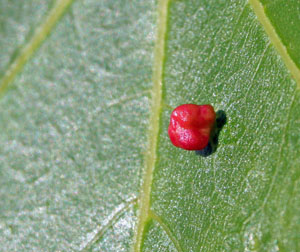
Once the leaf has expanded completely and reached its full size, the adult mites lay numerous eggs within the galls and die. The eggs hatch into whitish-orange, carrot-shaped nymphs with two pairs of legs. They remain within the galls, feeding on the gall tissue until they have matured into adults, usually within a few weeks. They then exit through an opening on the underside of the leaf to crawl to newly developing leaves and begin the cycle again if the tree still has new leaf growth. Once the tree has stopped new growth, usually in early summer, the mites are unable to stimulate the abnormal growth to produce the galls. At this time they head for the trunk and branches to overwinter in roughened areas on the bark, bud scales, or other protected places. There may be several generations during a growing season.
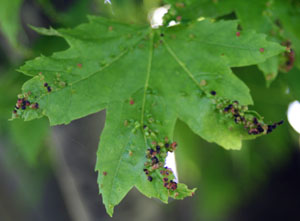
The extent of infestations can vary greatly, with large concentrations of galls on some trees or portions of trees, and very little on adjacent trees or the other part of a single tree. The leaves closest to overwintering sites are most heavily infested. Abundance also varies greatly from year to year, with galls appearing sporadically. Heavy infestations may deform the leaves or cause premature yellowing and drop. But usually the mites and their galls cause little harm.
Homeowners are often concerned when they notice the highly conspicuous and sometimes colorful growths and want to do something to correct the problem. Although the galls may look dramatic, they actually have very little effect on plant health, even in severe infestations. Control is generally not recommended for this primarily cosmetic problem on established trees. However, on newly planted trees with less foliage, galls may be a significant stress. Damaged leaves can be handpicked to reduce mite populations. Once the galls have formed, the mites are protected within the galls, so sprays will not be effective.
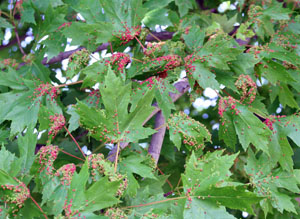
For trees with extreme infestations, preventative treatments in very early spring to control overwintering mites – as they begin feeding on the expanding leaves but before the galls have enclosed them – may reduce the incidence of galls but are generally of limited value. Application to the lower leaf surface should be made on a warm day in the spring when the leaves are about 1/4 expanded and again 10 days later. Because the mites overwinter on the host trees, dormant oil sprays can be quite effective (although oil sprays should not be used on sugar maple, Japanese maple and other oil-sensitive trees such as birch, hickory and walnut because of phytotoxicity problems). These should be applied prior to bud break. Because pesticides have limited impact on the mites, it is better to put efforts into good horticultural practices, such as watering and fertilizing, as needed, rather than spraying.
There are several different species of mites that cause different types of galls. The three main types are:
Maple Bladder Gall
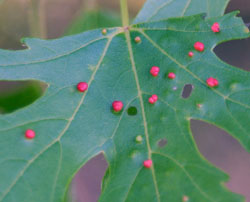
These irregular, rounded swellings on the upper surface of the leaves begin green, then turn pink to red and finally change to black. The hollow, 1/16 to 1/8 inch structures each containing a single mite are held up on short “stems.” They tend to be more numerous on early spring foliage, especially near the trunk and larger branches. When mite populations are high, the galls may cover nearly the entire upper leaf surface. Under these conditions the leaves are seriously deformed, tending to “cup” and fall prematurely. This type of gall is caused by the mite Vasates quadripedes, which attacks silver maple more commonly than red maple. Distribution of the mites on a tree tends to be irregular and more solitary on red maple than on silver maple.
Spindle Gall
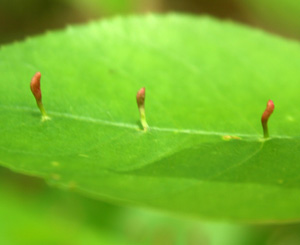
These small, elongated, spindle-shaped growths generally occur on the upper leaf surface. The 1/5” long galls are about the same diameter as a pencil lead, tapering at both ends. They begin a green color and eventually change to tan. Caused by the mite Vasates aceriscrumena, this type of gall is found most commonly on sugar maple, but also on red, silver and whitebark maple.
Erineum Gall
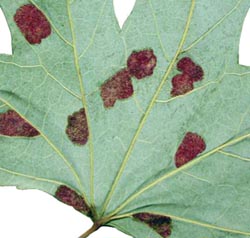
Velvety, felt-like patches, formed of numerous microscopic galls amid the leaf hairs on the underside of the leaves, occur on sugar, silver and red maple, and occasionally Norway maple. The ¼-3/8” mat-like galls begin light green or yellow-green and often become more conspicuous when they change to a bright red or crimson. Several species of Eriophyes can produce this type of gall. A similar type of gall caused by E. negundi occurs on boxelder, and other mites cause this type of gall on different hardwoods.
There is another less common, but striking, gall that may occur on red maple and sometimes sugar or silver maple. Unlike the three other galls, this one is caused by a midge (a type of small fly). Eyespot midge galls have bright red and yellow rings around the spherical growth.
– Susan Mahr, University of Wisconsin – Madison
Ask Your Gardening Question
If you’re unable to find the information you need, please submit your gardening question here:





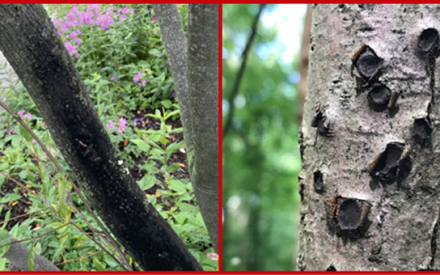 Blister Canker
Blister Canker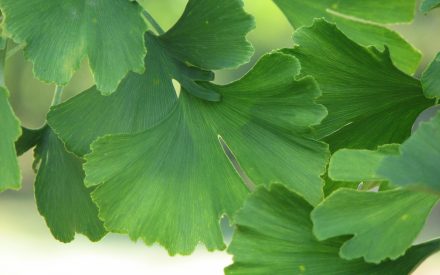 Trees and Shrubs for Diversity and Climate Change
Trees and Shrubs for Diversity and Climate Change Thyronectria Canker
Thyronectria Canker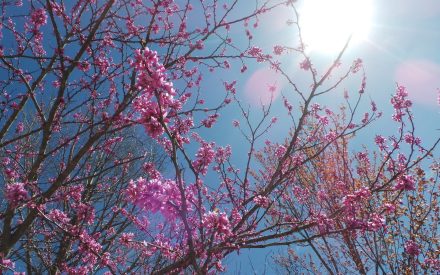 What’s the deal with “No Mow May?”
What’s the deal with “No Mow May?”


